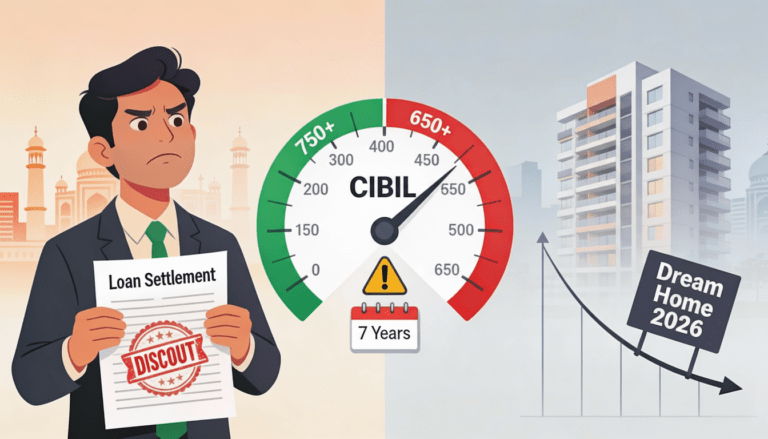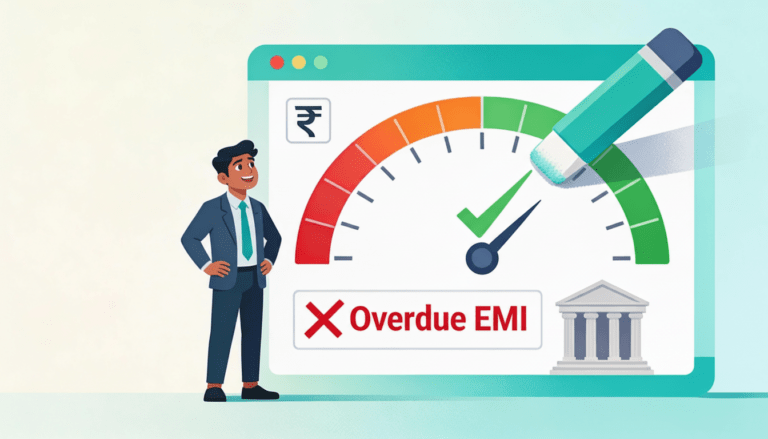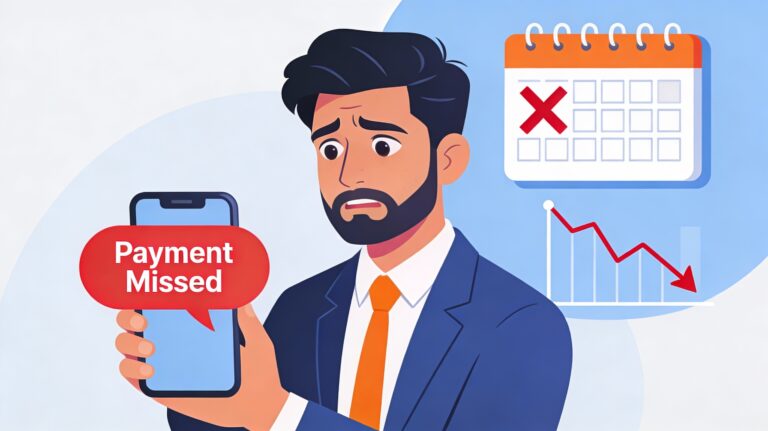
In recent months, the Reserve Bank of India (RBI) has been under increasing pressure to cut interest rates in response to slowing economic growth and subdued inflation. For millions of home loan borrowers across the country, this could mean significant relief in the form of lower Equated Monthly Installments (EMIs). As the RBI is most likely to cut rates in its upcoming monetary policy review, this blog post will delve into the implications of such a move, how it affects home loan borrowers, and what you can do to make the most of this opportunity.
” How RBI rate cuts can lower your home loan EMIs, boost savings, and enhance affordability. Learn about refinancing, floating rate benefits, and strategic financial planning to maximize the advantages of reduced interest rates. Stay informed and make the most of RBI’s monetary policy changes.”
Understanding the RBI’s Role in Interest Rates
The Reserve Bank of India (RBI) is the central bank of the country and plays a crucial role in determining the monetary policy. One of the key tools at its disposal is the repo rate, which is the rate at which the RBI lends money to commercial banks. When the RBI cuts the repo rate, it becomes cheaper for banks to borrow money, which in turn allows them to lower the interest rates they charge on loans, including home loans.
The Reserve Bank of India (RBI) plays a crucial role in determining interest rates in the country. Here’s a brief overview of how it works:
- Monetary Policy
The RBI uses monetary policy to control inflation, manage the money supply, and achieve sustainable economic growth. The primary tool for this is the repo rate, which is the rate at which the RBI lends money to commercial banks. By adjusting the repo rate, the RBI can influence the interest rates that banks charge their customers.
- Inflation Control
One of the RBI’s main objectives is to maintain price stability. By increasing the repo rate, the RBI can make borrowing more expensive, which tends to reduce spending and slow down inflation. Conversely, lowering the repo rate makes borrowing cheaper, encouraging spending and investment, which can help boost economic growth.
- Economic Growth
The RBI also aims to support economic growth. During periods of economic slowdown, the RBI may lower interest rates to encourage borrowing and investment. This can help stimulate economic activity and create jobs.
- Financial Stability
Apart from setting interest rates, the RBI regulates and supervises financial institutions to ensure the stability of the financial system. This includes managing foreign exchange, issuing currency, and acting as the lender of last resort to prevent bank failures.
Why the RBI is Likely to Cut Rates
The Reserve Bank of India (RBI) is expected to cut interest rates soon, and there are several reasons behind this anticipated move:
- Economic Slowdown
India’s economic growth has slowed significantly, with the GDP growth rate dropping to 6.4% in FY 2024-25 from 8.2% in the previous fiscal year. This slowdown is driven by high interest rates, persistent inflation, weak urban consumption, and sluggish capital expenditure.
- Inflation Control
While inflation remains a concern, particularly in food commodities, the RBI may prioritize boosting economic growth over controlling inflation in the short term. Lowering interest rates can help stimulate spending and investment, which can, in turn, support economic recovery.
- Global Economic Conditions
Global economic uncertainties, including trade tensions and currency volatility, have also impacted India’s economy. By cutting rates, the RBI aims to mitigate these external pressures and support domestic economic stability.
- New Leadership
The new RBI Governor, Sanjay Malhotra, is expected to take a more growth-oriented approach in his first policy meeting. This shift in focus is likely to result in a rate cut to address the current economic challenges.
- Market Expectations
Financial markets and experts widely anticipate a 25-basis point cut in the repo rate. This expectation is based on the need to balance growth and inflation while ensuring financial stability.
Impact of Rate Cuts on Home Loan EMIs
When the RBI cuts rates, it directly impacts the interest rates on home loans. Here’s how:
- Lower Interest Rates: A cut in the repo rate usually leads to a reduction in the Marginal Cost of Funds Based Lending Rate (MCLR), which is the benchmark rate to which home loan interest rates are linked. This means that the interest rate on your home loan could decrease, leading to lower EMIs.
- Reduced EMI Burden: For existing home loan borrowers, a reduction in interest rates can lead to a decrease in the EMI amount. This can provide much-needed relief to households, especially in times of economic uncertainty.
- Increased Affordability: Lower interest rates can make home loans more affordable for new borrowers, potentially leading to an increase in demand for housing. This can have a positive impact on the real estate sector, which has been struggling in recent years.
How to Make the Most of the Rate Cut
If the RBI does cut rates, here are some steps you can take to make the most of the situation:
- Check with Your Bank: As soon as the RBI announces a rate cut, check with your bank to see if they have passed on the benefit to borrowers. Some banks may take time to adjust their lending rates, so it’s important to stay informed.
- Consider Refinancing: If your bank does not reduce your home loan interest rate, you may want to consider refinancing your loan with another lender who offers a lower rate. However, be sure to factor in any prepayment charges or processing fees before making a decision.
- Opt for a Floating Rate Loan: If you are planning to take out a new home loan, consider opting for a floating rate loan. These loans are directly linked to the MCLR and are more likely to benefit from future rate cuts.
- Prepay Your Loan: If you have some extra funds, consider making a partial prepayment on your home loan. This can help reduce the principal amount and the overall interest burden, especially if interest rates are expected to remain low.
Historical Context: RBI Rate Cuts and Home Loan EMIs
To understand the potential impact of an RBI rate cut, it’s helpful to look at historical data. Over the past decade, the RBI has cut rates several times in response to changing economic conditions. For example, between 2015 and 2017, the RBI cut the repo rate by a cumulative 200 basis points (2%). This led to a significant reduction in home loan interest rates, with many banks offering loans at rates as low as 8.5%.
During this period, home loan EMIs for borrowers decreased substantially. For instance, on a 20-year home loan of Rs. 50 lakh, a 2% reduction in interest rates could lead to a monthly EMI reduction of around Rs. 6,500. Over the life of the loan, this could translate into savings of over Rs. 15 lakh.
The Reserve Bank of India (RBI) has a history of using rate cuts to manage economic conditions, and these cuts have had significant impacts on home loan EMIs. Here are some notable instances:
2012 Rate Cut
In 2012, the RBI made an unexpected rate cut, which was later considered a policy mistake due to its timing and the economic conditions at that time. This cut aimed to stimulate growth but faced criticism for not adequately addressing inflationary pressures.
2015 Rate Cut
In 2015, the RBI surprised the market with an inter-meeting rate cut. This move was intended to boost economic activity amid slowing growth. Home loan borrowers benefited from reduced EMIs as banks passed on the lower rates.
2019 Rate Cut
In 2019, the RBI again surprised with a 25 basis points cut, reversing a previously hawkish stance. This cut was part of a broader strategy to support economic growth and manage inflation. Home loan EMIs decreased, providing relief to borrowers.
Current Expectations
As of 2025, the RBI is expected to cut rates again, with a 25 basis points reduction anticipated. This move is driven by the need to support economic growth amid slowing GDP and easing inflation. If implemented, this rate cut will likely lead to lower home loan EMIs, benefiting borrowers with floating-rate loans.
Impact on Home Loan EMIs
Historically, rate cuts have led to lower EMIs for home loan borrowers. When the RBI reduces the repo rate, banks typically lower their lending rates, making home loans cheaper. This can result in significant savings over the loan tenure and increased affordability for new borrowers.
Expert Opinions on the Upcoming Rate Cut
Many economists and financial experts believe that the RBI is likely to cut rates in its next monetary policy review. Here are some insights from industry leaders:
- Dr. Raghuram Rajan, Former RBI Governor: “Given the current economic conditions, a rate cut seems imminent. The RBI has the room to cut rates, and it should do so to support growth.”
- Shaktikanta Das, Current RBI Governor: “The RBI is closely monitoring the economic situation and will take appropriate action as needed. Our primary focus is on maintaining price stability while supporting growth.”
- Industry Analysts: “A rate cut by the RBI could provide a much-needed boost to the housing sector. Lower EMIs will make home loans more affordable, potentially leading to an increase in home sales.”
Potential Challenges and Considerations
While a rate cut is generally positive for home loan borrowers, there are some challenges and considerations to keep in mind:
- Transmission of Rate Cuts: One of the key challenges is the transmission of rate cuts by banks. Even if the RBI cuts rates, banks may not immediately pass on the benefit to borrowers. This can delay the impact on EMIs.
- Economic Uncertainty: While lower interest rates can stimulate economic activity, they are not a panacea for all economic ills. Other factors, such as job creation and income growth, also play a crucial role in determining the health of the economy.
- Impact on Savings: Lower interest rates can also impact savers, as the returns on fixed deposits and other savings instruments may decrease. This can be a concern for retirees and others who rely on interest income.
As the RBI is most likely to cut rates in its upcoming monetary policy review, home loan borrowers can look forward to some relief in the form of lower EMIs. However, it’s important to stay informed and take proactive steps to make the most of this opportunity. Whether you are an existing borrower or planning to take out a new home loan, understanding the implications of a rate cut can help you make better financial decisions.
In the coming months, keep an eye on the RBI’s announcements and stay in touch with your bank to ensure that you benefit from any rate cuts. By doing so, you can ease your EMI burden and take a step closer to achieving your dream of owning a home.
-
Amazon Pay UPI Goes Biometric: Pay Makes UPI PIN-Free Up to ₹5000
Imagine ditching UPI PINs forever—Amazon Pay just unlocked fingerprint and face magic for instant ₹5,000 payments in India!
-
₹75 Lakh Cr Industry Shakeup: SEBI’s Fee Slash Means Higher Wealth for You.
SEBI just slashed mutual fund fees in a shocking overhaul—but who loses billions? Discover how 15 bps cuts
-
Indian Stock Market Trends: PSU Banks Outshine Amid $18B FII Exit Chaos December 18, 2025
Shocking! Sensex dips 0.14% to 84,559 as RBI slashes repo to 5.25%—but GDP rockets 8.2%, CPI at 0.71%.
































